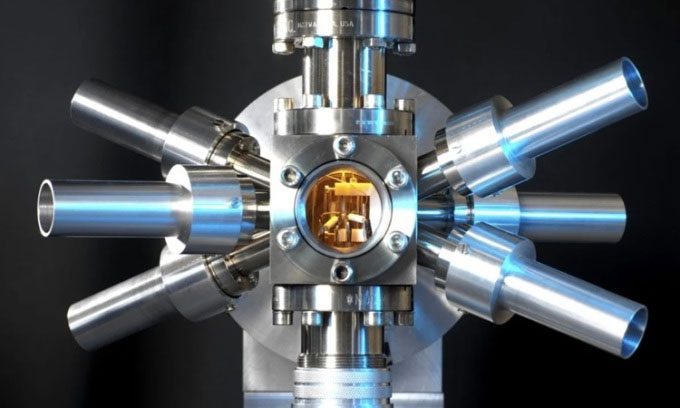A Chinese research team develops a super-precise optical clock that deviates by just one second every 7.2 billion years.
Using ultra-cold strontium atoms and a powerful laser beam, the research team at the University of Science and Technology of China has created a stable clock with a deviation of less than 5 parts in 10^18. This achievement makes China the second country in the world, after the United States, to achieve such a level of timing precision. It also lays an important foundation for establishing a global network of optical clocks, according to the research team led by physicist Pan Jianwei. Furthermore, this clock opens up new avenues for testing fundamental physics theories, detecting gravitational waves, and exploring dark matter, as reported by Sun on January 29.

Optical clock using strontium atoms. (Photo: Science Photo Library).
The current record for the most accurate strontium optical clock is held by the University of Colorado in Boulder, developed by American-Chinese physicist Jun Ye and his team. This device is slightly more accurate than its Chinese counterpart and operates more stably. Other major players in the race include the University of Tokyo and the Max Planck Institute for the Physics of Complex Systems in Germany.
Optical clocks have enormous potential applications in essential infrastructure in the future. They can significantly enhance the accuracy of global positioning satellite systems, help build highly secure communication networks based on quantum key distribution, and improve the synchronization and efficiency of power grids, even playing a crucial role in security and defense.
Currently, the definition of a second is based on microwave atomic clocks. They operate by releasing cesium atoms into a high altitude, allowing them to fall under the influence of gravity in a fountain-like motion when stimulated by microwave pulses. Their electrons then absorb and emit photons oscillating between different energy levels. By counting the cycles that mark a fraction of a second, scientists can achieve timing accuracy with stability in the order of several parts in 10^15. However, the precision of microwave clocks is limited by microwave frequency standards. In recent years, researchers have developed atomic clocks that use laser light to drive electronic transitions, achieving performance that is twice as efficient as microwave-based clocks.
However, if microwave clocks are to be replaced by optical clocks for defining time in the future, at least three laboratories worldwide will need optical clocks with stability under 5 parts in 10^18 and deviation under 2 parts in 10^18. These are two key parameters that measure the performance and reliability of optical clocks.
In their study, Pan’s expert team first cooled strontium-87 atoms to temperatures of a few micro-Kelvin, then trapped them in a one-dimensional lattice created by intersecting laser beams. Next, they used a super-stable laser to interact with the strontium-87 atoms and excite atomic transitions with high precision. They calculated that the new clock would only deviate by one second after 7.2 billion years. The research team plans to conduct comparisons between optical clocks made with different types of atoms such as strontium-87 and ytterbium-171.





















































